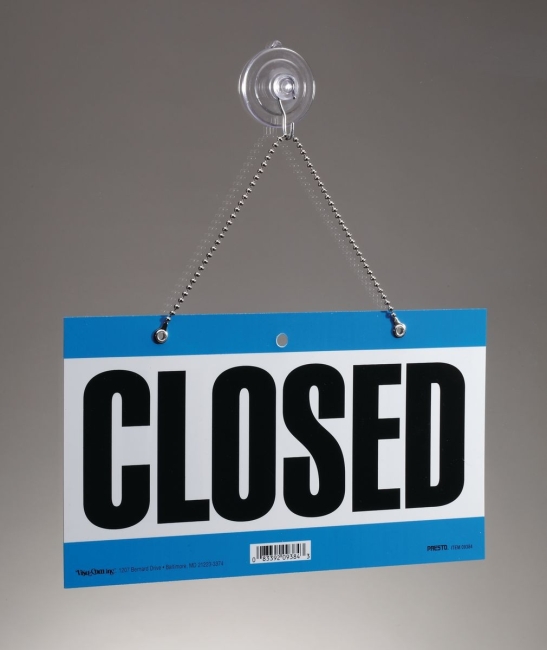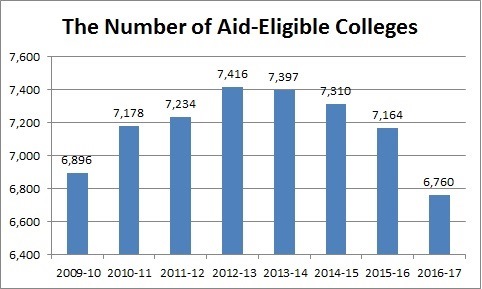You have /5 articles left.
Sign up for a free account or log in.

Wikimedia Commons
It has become trendy to predict that higher education is on the verge of a major collapse, what with enrollments falling as loan debt and rising tuition cause students and families to ask harder questions about the value of a college credential.
The most extreme predictions envision hundreds and even thousands of colleges and universities closing over a decade or so. But more even-keeled analysts also have foreseen increases in the number of failing institutions: Moody’s Investors Service in 2015, for instance, said closures and mergers of small institutions would triple and double, respectively, in the coming years.
New federal data suggest the increasing financial pressures may be starting to take a toll on institutions. An annual report from the Education Department’s National Center for Education Statistics shows that the number of colleges and universities eligible to award federal financial aid to their students fell by 5.6 percent from 2015-16 to 2016-17. That’s the fourth straight decline since a peak of 7,416 institutions in 2012-13. It is also by far the largest (the others were 0.3, 1.2 and 2.0 percent, in order).

There’s a giant asterisk on the data for those predicting the decline and fall of traditional higher education: as in the past, the vast majority of the vanishing institutions are for-profit colleges. Some of that sector’s problems are shared with nonprofit institutions (declines in the number of traditional college-age students, concerns about debt and price), but for-profit institutions also have encountered aggressive regulation from the federal government and self-inflicted wounds from misbehavior and poor performance.
That combination of factors contributed to a one-year drop of 11.2 percent (from 3,265 to 2,899) in the number of Title IV-eligible for-profit institutions, according to the federal data, and a sharp decline of 17.8 percent since the 2012-13 academic year. (Note: The latter percentage has been lowered because of an error in the table below.)
While for-profit colleges’ woes may be driving the numbers, public and private nonprofit colleges have not been immune.
The number of public colleges edged down to 1,985 in 2016-17, from 1,990 in 2015-16 and 2,009 in 2012-13.
These are likely to include the several institutions in Georgia that were part of mergers.
The number of private nonprofit institutions, meanwhile, fell by 33, or 1.7 percent, from 2015-16 to 2016-17, from 1,909 to 1,876. But the 2015-16 number had risen by almost that amount the year before, so it’s not entirely clear how significant that drop is, or how representative it is of what is to come.
| Academic Year | All Institutions | Public | Private Nonprofit | For-Profit |
| 2009-10 | 6,896 | 2,015 | 1,865 | 3,016 |
| 2010-11 | 7,178 | 2,043 | 1,869 | 3,266 |
| 2011-12 | 7,234 | n/a | n/a | n/a |
| 2012-13 | 7,416 | 2,009 | 1,880 | 3,527 |
| 2013-14 | 7,397 | 2,008 | 1,892 | 3,497 |
| 2014-15 | 7,310 | 1,991 | 1,883 | 3,436 |
| 2015-16 | 7,164 | 1,990 | 1,909 | 3,265 |
| 2016-17 | 6,760 | 1,985 | 1,876 | 2,899 |
| Data for 2011-12 not available from National Center for Education Statistics | ||||









